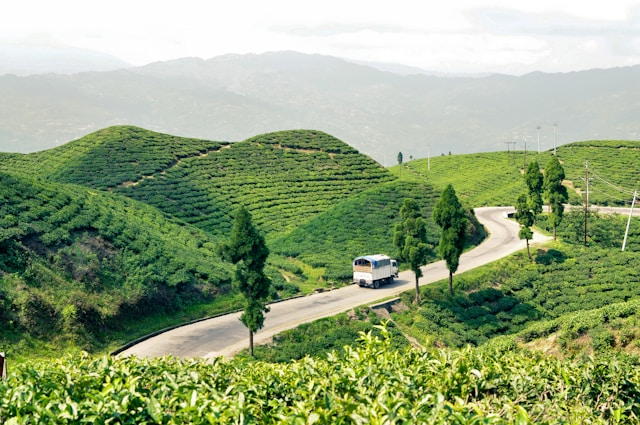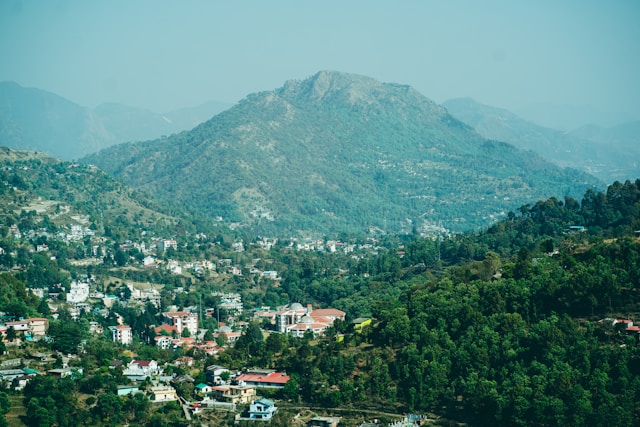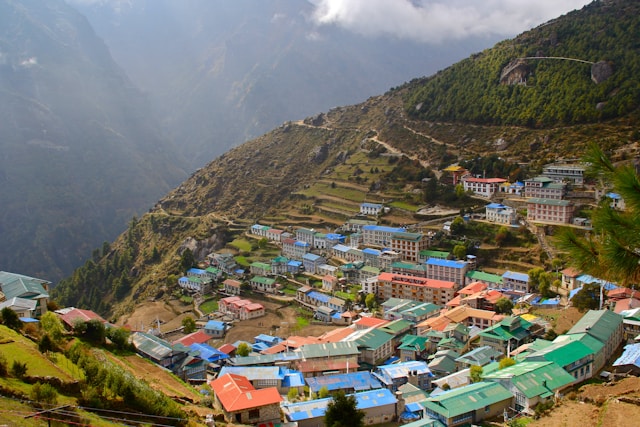Exploring the Emerald Canopies of Ilam
Nestled in the eastern hills of Nepal, Ilam unfolds as a breathtaking expanse of rolling tea gardens and mystical forests that whisper stories of age-old traditions. We find ourselves entranced by the endless waves of emerald green, where nature walks become a serene pilgrimage through misty trails and panoramic hilltops. The air is pure, tinged with the scent of fresh tea leaves and damp earth, inviting every wanderer into a sensory haven unlike anywhere else in Nepal.
As we meander along the narrow footpaths flanked by thick rhododendron and magnolia, the silence is broken only by birdsong and the soft rustle of leaves. These walks immerse us in an ecosystem teeming with vibrant biodiversity, from elusive red pandas to playful langurs swinging above. The serenity of Ilam’s forests brings peace to every traveler, offering a rare opportunity to reconnect with unspoiled wilderness.
The Allure of Ilam’s World-Famous Tea Gardens
The heart of Ilam beats in its tea gardens, where delicate green leaves stretch across terraced hills like a living quilt. Here, we watch as expert hands pluck the tenderest leaves at dawn, a tradition perfected over generations. The tea plantations of Ilam produce Nepal’s most aromatic teas, renowned worldwide for their unique flavor profiles shaped by the cool Himalayan breeze and rich soil.
Walking through these gardens, we see workers moving gracefully among the bushes, baskets strapped across their backs, embodying the rhythm of life in Ilam. The landscape is a masterwork of human and nature in harmony, where every slope and contour is carved to perfection for optimal tea cultivation. Each garden is an open invitation to experience the journey from leaf to cup, with plantation tours culminating in freshly brewed tastings of Ilam’s prized orthodox teas.
Experiencing Sunrise at Shree Antu Danda
One of the highlights of any visit to Ilam is witnessing dawn break over Shree Antu Danda, a vantage point that gifts us an unforgettable view of the eastern Himalayas. As the first rays of sunlight brush the horizon, Kanchenjunga, the world’s third-highest peak, emerges in brilliant gold, rising above a sea of clouds. We gather with travelers and locals alike, sharing a reverent silence as nature paints the sky in hues of rose and amber.
The trail to Shree Antu Danda leads us through a mosaic of cardamom plantations and tea fields, with each step revealing sweeping vistas that stretch to the borders of India and Bhutan. The journey itself becomes a meditative experience, punctuated by the gentle chatter of farmers and the distant call of pheasants. Watching sunrise here, we feel an indelible connection to the grandeur of Nepal’s eastern frontier.
Biodiversity of Ilam’s Lush Forests
Ilam’s forests are a living archive of Himalayan flora and fauna, offering us a close look at the region’s incredible biodiversity. Dense woodlands of oak, laurel, and chestnut house a rich tapestry of wildlife, from barking deer to Himalayan black bears. During our nature walks, we spot colorful butterflies fluttering above wild orchids and rare bird species like the satyr tragopan, which finds refuge in Ilam’s undisturbed canopy.

Guided treks reveal sacred groves revered by local communities, where age-old trees stand as guardians of ancient myths. The forest floor is alive with ferns, mosses, and lichens that thrive in the mist-laden climate, reminding us of the delicate balance sustaining this natural paradise. We leave with a profound respect for the efforts of Ilam’s people to protect their forest heritage.
Cultural Encounters in Ilam’s Villages
Beyond its green landscapes, Ilam enchants us with the rich culture of ethnic communities such as the Limbu, Rai, and Magar. We wander into villages perched on ridgelines, where traditional wooden houses are adorned with intricate carvings, and warm smiles greet every guest. Participating in local festivals, we watch sacred dances performed to the beats of madal drums, and hear ancient stories passed down through songs.
Homestay experiences offer us an intimate look at rural life, from learning the art of preparing dhido and gundruk to joining families in evening gatherings by the hearth. These moments of cultural exchange deepen our appreciation of Ilam’s heritage, where harmony with nature and community remains a way of life.
The Tea Experience: From Plucking to Tasting
No journey to Ilam is complete without immersing ourselves in the tea-making process. We join farmers at dawn to pluck the tender two leaves and a bud, understanding the patience and precision that defines quality tea. At processing units, we observe the delicate steps of withering, rolling, fermenting, and drying, all done with meticulous care to preserve the leaves’ character.
The final act of this journey is a tasting session, where we sip teas ranging from the light, floral first flush to the deeper, robust second flush. Each cup tells a story of soil, rain, and craftsmanship unique to Ilam. We leave with newfound knowledge of tea’s nuances and a profound respect for the artisans who shape each harvest into a masterpiece.
Sustainable Tourism and Conservation Efforts
Ilam’s pristine beauty comes with a responsibility to protect its fragile ecosystems. We are inspired by sustainable tourism initiatives that prioritize conservation and community benefit. Local guides promote eco-friendly practices, and community-run lodges reinvest profits into education, healthcare, and reforestation projects. We see firsthand how conscious travelers can support Ilam’s future, ensuring its tea gardens and forests remain vibrant for generations to come.
Through our journeys, we realize that every step in Ilam is an opportunity to embrace responsible travel—minimizing waste, respecting local customs, and choosing homestays that empower women and marginalized groups. These efforts help preserve the delicate harmony that makes Ilam a true green jewel of Nepal.
How to Reach Ilam and Best Times to Visit
We recommend accessing Ilam via Bhadrapur Airport, followed by a scenic drive through winding hills that offer glimpses of terraced farms and rivers. Alternatively, road trips from Kathmandu or Biratnagar provide an adventurous journey into Nepal’s eastern heartland. The best seasons to visit are spring (March to May) and autumn (September to November), when skies are clear, temperatures mild, and the landscapes vibrant with wildflowers or post-monsoon freshness.
Visiting during these months allows us to fully appreciate Ilam’s panoramic vistas, join in local harvest festivals, and enjoy nature walks at their most spectacular. Whether we come for a weekend escape or a deeper exploration, Ilam rewards us with memories etched in shades of green and gold.


